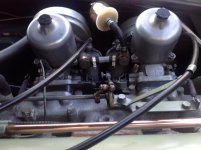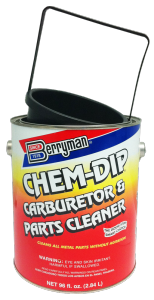I have a 1966 3000 MKIII that has been in storage for 20+ years. I know that is shameful but I am interested in getting driveable again.
The clutch has bonded itself to the flywheel. The engine will start in 4th gear. Is there a way to seperate the clutch and flywheel, hopefully without pulling the engine again?
I have been told to bring up the RPM's and lock the brakes! Since the car is on jack stands I am a little concerned about this remedy.
Any suggestions will be welcomed.
The clutch has bonded itself to the flywheel. The engine will start in 4th gear. Is there a way to seperate the clutch and flywheel, hopefully without pulling the engine again?
I have been told to bring up the RPM's and lock the brakes! Since the car is on jack stands I am a little concerned about this remedy.
Any suggestions will be welcomed.

 Hi Guest!
Hi Guest!

 smilie in place of the real @
smilie in place of the real @
 Pretty Please - add it to our Events forum(s) and add to the calendar! >>
Pretty Please - add it to our Events forum(s) and add to the calendar! >> 




